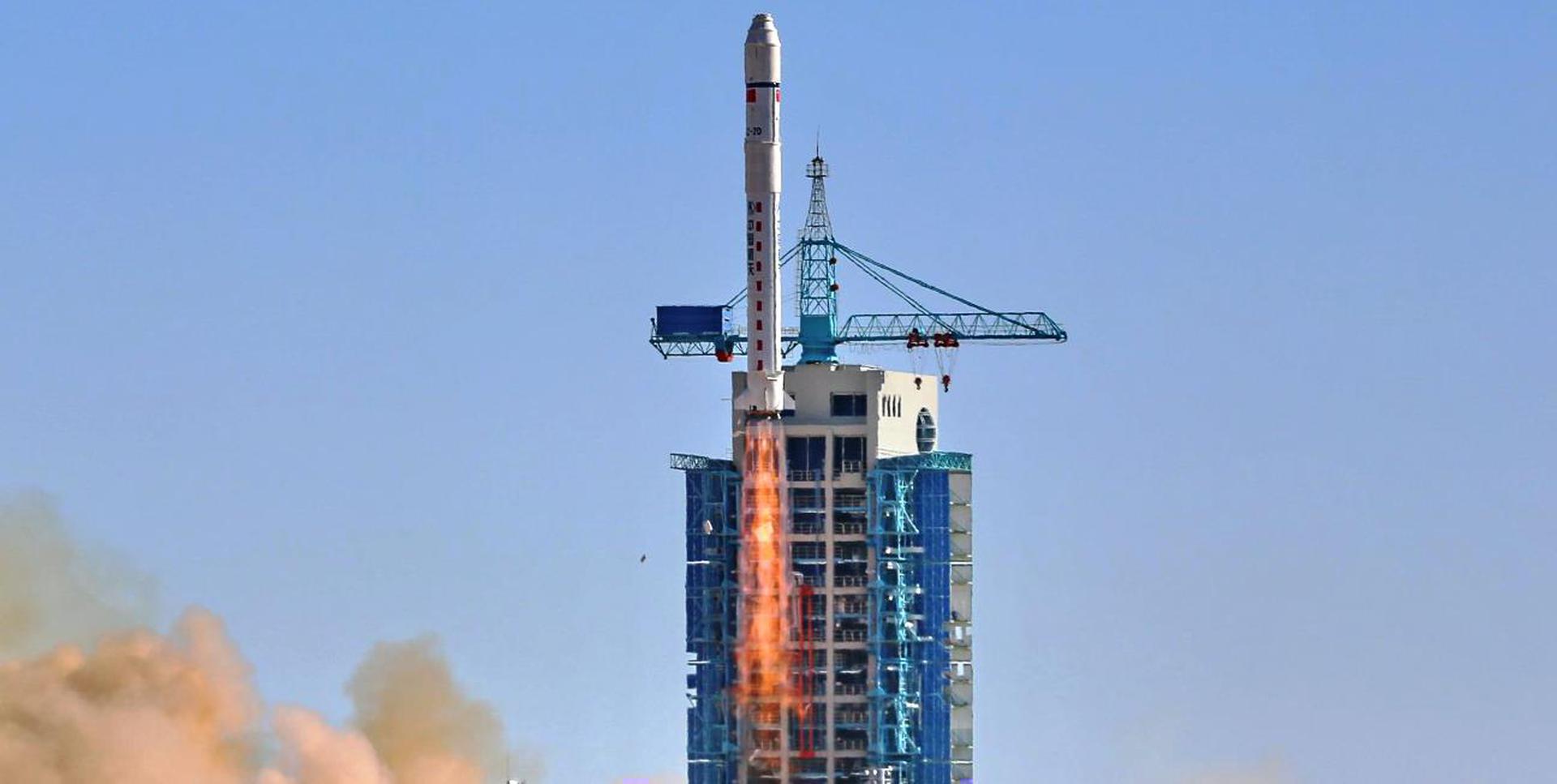
Long March 2D
ActiveChina Aerospace Science and Technology Corporation (CASC)
Aug. 9, 1992
Description
The Long March 2D, also known as the Chang Zheng 2D, CZ-2D and LM-2D, is a Chinese orbital carrier rocket. It is a 2-stage carrier rocket mainly used for launching LEO and SSO satellites.
Specifications
-
Minimum Stage
1 -
Max Stage
2 -
Length
38.3 m -
Diameter
3.35 m -
Fairing Diameter
― -
Launch Mass
232.0 T -
Thrust
2962.0 kN -
Apogee (Sub-Orbital)
500.0 km
Family
-
Name
Long March 2D -
Family
― -
Variant
2D -
Alias
― -
Full Name
Long March 2D
Payload Capacity
-
Launch Cost
$30000000 -
Low Earth Orbit
3500.0 kg -
Geostationary Transfer
Orbit
― -
Direct Geostationary
― -
Sun-Synchronous Capacity
1300.0 kg
China Aerospace Science and Technology Corporation
Government
Chairman & President: Lei Fanpei
CASC 1999The China Aerospace Science and Technology Corporation (CASC) is the main contractor for the Chinese space program. It is state-owned and has a number of subordinate entities which design, develop and manufacture a range of spacecraft, launch vehicles, strategic and tactical missile systems, and ground equipment. It was officially established in July 1999 as part of a Chinese government reform drive, having previously been one part of the former China Aerospace Corporation. Various incarnations of the program date back to 1956.
Long March 2D | Shiyan 31
China Aerospace Science and Technology Corporation | ChinaJiuquan Satellite Launch Center, People's Republic of China
Oct. 13, 2025, 10 a.m.
Long March 2D | Shiyan 30 01-02
China Aerospace Science and Technology Corporation | ChinaXichang Satellite Launch Center, People's Republic of China
Sept. 29, 2025, 3 a.m.
Long March 2D | Zhangheng-1-02
China Aerospace Science and Technology Corporation | ChinaJiuquan Satellite Launch Center, People's Republic of China
June 14, 2025, 7:56 a.m.
Status: Launch Successful
Mission:
Zhangheng 1-02, also known as CSES-02 (China Seismo-Electromagnetic Satellite-02), is the follow-on mission to Zhangheng 1/CSES, a Chinese–Italian space mission dedicated to monitoring the electromagnetic field and waves, plasma parameters, and particle fluxes induced by natural sources and artificial emitters in near-Earth space, to study their correlations with the occurrence of seismic events. The satellite mission is part of a collaboration program between the CNSA (China National Space Administration) and ASI (Italian Space Agency), and developed by CEA (China Earthquake Administration) and INFN (Italian National Institute for Nuclear Physics), together with several Chinese and Italian Universities and research Institutes.
Sun-Synchronous OrbitLong March 2D | Space Computing Constellation
China Aerospace Science and Technology Corporation | ChinaJiuquan Satellite Launch Center, People's Republic of China
May 14, 2025, 4:12 a.m.
Long March 2D | 4 x SatNet test satellites
China Aerospace Science and Technology Corporation | ChinaJiuquan Satellite Launch Center, People's Republic of China
April 1, 2025, 4 a.m.
Status: Launch Successful
Mission:
Officially described as "Satellite-Internet Technology Demonstration Satellites". Probable 4 test satellites for the Chinese state-owned LEO communication satellite constellation SatNet, 2 by Galaxy Space and 2 by Chang Guang Satellite Technology Co.
Low Earth OrbitLong March 2D | SuperView Neo 3-02
China Aerospace Science and Technology Corporation | ChinaJiuquan Satellite Launch Center, People's Republic of China
March 15, 2025, 4:11 a.m.
Long March 2D | PRSC-EO1
China Aerospace Science and Technology Corporation | ChinaJiuquan Satellite Launch Center, People's Republic of China
Jan. 17, 2025, 4:07 a.m.
Long March 2D | PIESAT-2 09-12
China Aerospace Science and Technology Corporation | ChinaTaiyuan Satellite Launch Center, People's Republic of China
Dec. 16, 2024, 6:50 p.m.
Electron
The Nation God Navigates (iQPS Launch 5)
Rocket Lab Launch Complex 1B - Rocket Lab Launch Complex 1, Mahia Peninsula, New ZealandSynthetic aperture radar Earth observation satellite for Japanese Earth imaging company iQPS.
Ariane 62
Sentinel-1D
Ariane Launch Area 4 - Guiana Space Centre, French GuianaSentinel-1D carries an advanced radar technology to provide an all-weather, day-and-night supply of imagery of Earth’s surface as part of the Sentine…
Long March 7A
Unknown Payload
201 - Wenchang Space Launch Site, People's Republic of ChinaDetails TBD.
LVM-3 (GSLV Mk III)
CMS-03 (GSAT-7R)
Satish Dhawan Space Centre Second Launch Pad - Satish Dhawan Space Centre, IndiaCommunications Satellite for the Indian Navy, replacing GSAT-7 for secure real-time links between Indian warships, submarines, aircraft, and shore-ba…
Falcon 9
Bandwagon 4 (Dedicated Mid-Inclination Rideshare)
Space Launch Complex 40 - Cape Canaveral SFS, FL, USADedicated rideshare flight to a mid-inclination orbit with dozens of small microsatellites and nanosatellites for commercial and government customers.


